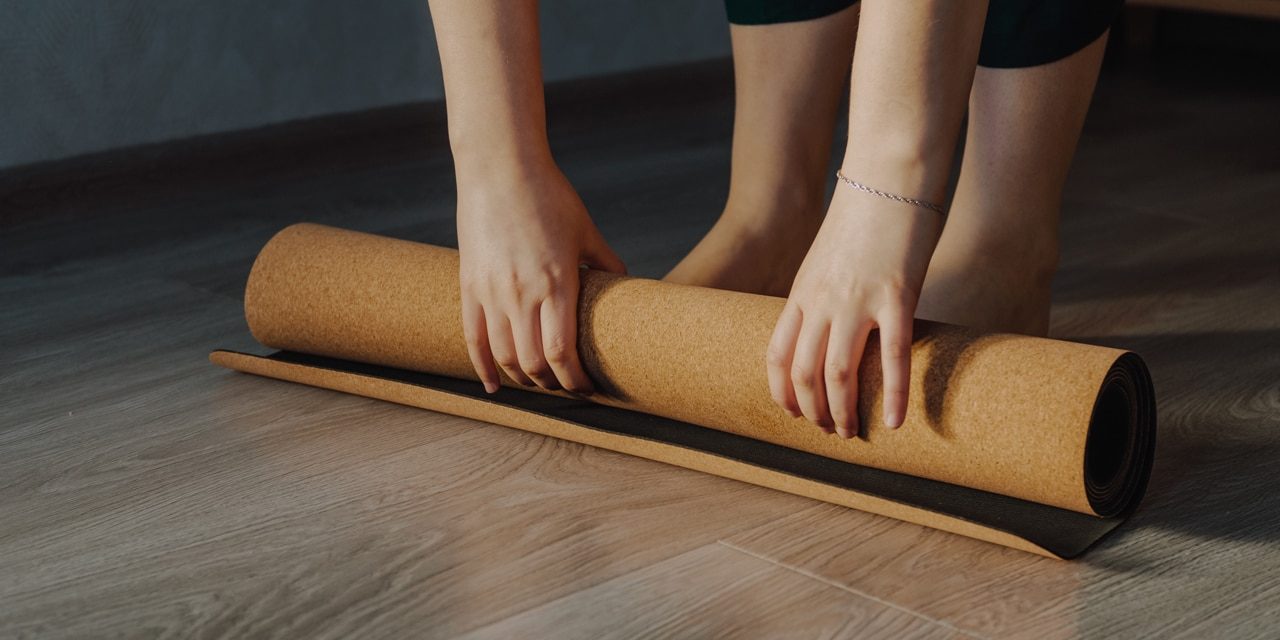A Yogi’s Guide To Saving The Planet

How to choose an eco-friendly yoga mat
Looking for a new yoga mat? Beware: most mats are made from plastic! Bethany Norman explores some of the natural alternatives if you want your ethics to match your asana
In the market for a new mat? Beware: most mats are made from plastic, or PVC. All of the most common yoga mat materials are explored in a more in-depth series of articles available now on the OM website (see links below) — but for now, here are a number natural materials and choices available to all you eco-conscious yogis out there.
However, if you come to the conclusion that plastic is best for you, you may want to find a mat that is made of recycled materials. You’ll not only be stopping new plastic being produced, but also helping the recycling of PVC take off. Below are some of the more natural alternatives to plastic:
Natural rubber (not synthetic!)
Rubber is one such natural choice, as the raw material it is made from comes from trees. This raw material is a milky substance called latex that some plants naturally produce as a response to damage. Commercially, it is collected from the Brazilian rubber tree by making incisions in the bark and collecting the liquid, which then sets, and is sent for processing. All-in-all it’s a natural product, and also 100% biodegradable.
However, there are some downsides. For example, during the processing which turns latex into rubber, chemicals are added to make the resulting material stable, strong, and durable. There are also concerns over the environmental impact and ethical values of companies harvesting, and producing natural rubber. For example, there are problems around deforestation of rainforest for rubber plantations, the use of herbicides or burning to keep the land clear, and unethical treatment of farm workers, such as the use of methamphetamines to make them work faster. If you’re interested in rubber, check the credentials of the company producing and selling the mat, to try and find the best option from an environmental, and social point of view.
Cork
Another alternative material to PVC for making yoga mats is cork, which comes from the Cork Oak tree.
To obtain cork the bark of the tree is gently removed when it is mature enough, usually around 25 years old. This doesn’t kill the tree, it just grows another bark skin, which can then be removed after another nine years.
Cork seems a particularly environmentally-friendly option: the mixed forests that cork grows in are ecologically diverse, the denuded tree can absorb more CO2 than one not stripped, and the workers are paid fairly for their labour.
Premium products are punched straight out of the raw material once it has been cured, so there is no need for any chemical additives, making it 100% natural, and 100% biodegradable. The only slight downside is that less pricey products are bonded with glue, or plastic, and watch out as some cork mats are backed with a plastic material to provide grip and cushioning.
Other considerations
When you are thinking of purchasing any eco-friendly yoga mat, it is not just the material that counts. You could also consider:
- Packaging. Preferably minimal and recyclable.
- The business ethics of the company producing and selling the mat. Look out for companies that have a wider social conscience such as looking after their workers, or giving back to the community.
- A ‘take back’ scheme for your old mat. Some yoga mat companies will take back your old mat when you are buying one of their new ones. However, find out what they will do with it!
As people who do yoga, we can reduce our environmental impact through our practice as well. Here are some ideas:
- Only buy a new mat when you really need it.
- Consider carefully which mat you choose, and what it is made from.
- Use that mat for as long as possible.
- And, finally, dispose of it in an ethical manner when it has come to the end of its life.
Good luck, and do your best!
Bethany Norman is a yoga teacher with four years’ experience. With a background in healthcare, and a passion for being as healthy as possible, her newest drive is to get yogis thinking more about the environment when it comes to their practice. When she’s not teaching yoga or working as a nurse, you’ll find her outdoors and getting active; gardening, out for a bike ride, or doing a long walk with a friend. Visit: live-well-yoga.co.uk
This is a part of a longer three-part article on the OM website exploring how to select a planet-friendly yoga mat. Read the full series by Bethany Norman online




